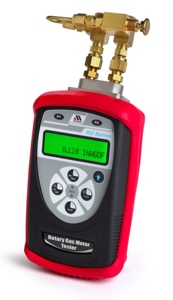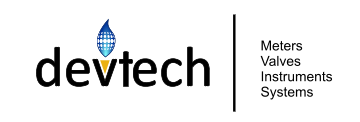ARTICLESDIFFERENTIAL TESTING OF GAS ROTARY METERSby John Paul Heston Posted by Devtech
Gas meters are the cash registers for gas utilities. As such each utility should be concerned that the cash registers are performing accurately and not either shorting their customers or giving away gas, which of course is $$. Either scenario can cause headaches in either refunds to customers, lost revenue or even losing measurement due to a preventable equipment failure. Residential meters are typically accuracy tested in a meter shop as part of an ongoing meter sampling program. Commercial and industrial meters are also sometimes tested in a meter shop however most testing of these meters is performed in the field. In this article we will be discussing one of the options for testing gas rotary meters in the field.

Rotary meters make up the bulk of the commercial and industrial meter population for a utility. Rotary meters are typically utilized in medium to large gas volume applications, so it is critical that these meters maintain their accuracy since a large percentage of a utilities' revenue is counting on these meters, in both senses of the word. In order to ensure rotary meters maintain their accuracy, they are typically tested in the field by a field transfer prover. This is the most common method and is very good test if performed properly. Another method gaining in popularity is differential testing. This is also a very good test, again if performed properly. Differential testing of rotary meters offers two key advantages. First, the test equipment is much less expensive than a transfer prover. Secondly and most importantly, the actual test can be performed much faster than with a transfer prover thus a significant savings in time and resources. This is of course important to many utilities which are dealing with a downsized staff and need to get the most out of each workday. A differential test is an "inferential test" if you will, in that we are not directly evaluating the meter's accuracy, we are inferring that the meter is accurate if the differential pressure across the meter is within tolerance. For the actual test it is necessary that there be significant gas flow through the meter. In order to verify flow the flow rate, the meter can either be timed via the mechanical counter or if a flow corrector is available it will display the current flow rate. For the actual verfications of the differential pressure, a tube manometer, a mechanical gauge(s) or most digital manometers are not capable of properly measuring differential across a rotary meter due to the pulsation effect from the rotors within the meter. A special manometer such s the Meriam M201 is required. The M201 is built specially for this application and has special dampening circuitry to offset this pulsation and provide an accurate differential reading. The M201 has two hoses which need to be connected to two pressure points, one upstream of the meter and the other downstream. This is usually accomplished via two Pete's Plugs installed in the taps located at the top of most rotary meters. Once the test is performed properly and the current differential pressure is obtained, it is then time to refer to the differential chart provided by the meter manufacturer for that brand and model meter at a given flow rate. If the differential value is within that range it is inferred that the meter is accurate. If the differential value is outside of the acceptable range it is now time to troubleshoot the meter which may involve disassembly and/or repair. Since a rotary meter is a mechanical device there are of course a number of issues that can cause the differential/accuracy to be outside of specification. The most common issue falls into the category of increased internal resistance. This can be associated with a bind in the rotors caused by improper installation, shock or debris. Debris could be large pieces, small pieces, or even an accumulation of pipe dust. The meter may have either too much or not enough oil. Finally, another very possible issue could be bearing wear or failure thus new bearings would be required. To minimize these common problems we suggest that rotary meters not be installed with heavy pipe strain, valves are always opened slowly to prevent shock, filters or strainers are always installed upstream of the meter, and that meters are properly maintained, particularly monitoring that the oil level is always half way up the sight glass. It has been proven for several years now that the differential testing of rotary meters can be an effective supplementary or even primary field proving method. These tests can in some instances be completed in just a few minutes and can save a utility thousands of dollars. Using this proven testing method and test equipment on a more frequent basis than transfer proving can and will prove beneficial to any utility, large or small. For further information on the Meriam M201, follow this link: http://www.meriam.com/productcart/pc/viewPrd.asp?idproduct=16&idcategory=20 or contact us at Devtech, 1-800-366-9041 or via our online contact form.
|
| Devtech Sales, Inc. 118 S. Lake Ave. Avon Park, FL 863-453-5959 | top ^ |

